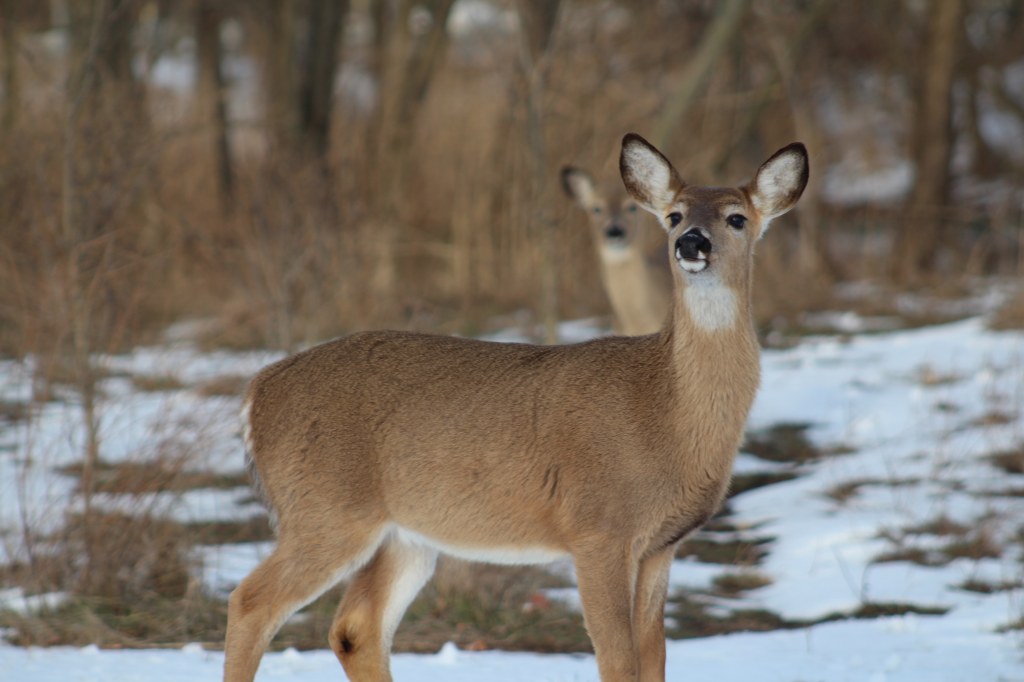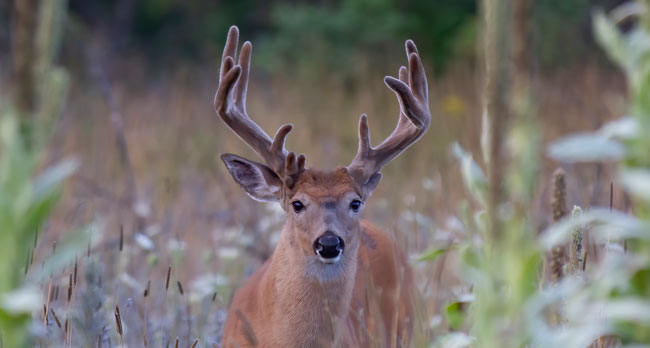
The Whitetail Deer of Ohio
The whitetail deer (Odocoileus virginianus) is an iconic species that plays a significant role in Ohio's diverse ecosystem. These graceful creatures have adapted remarkably well to the varying landscapes of the Buckeye State, from its dense timber to its sprawling agricultural lands. Understanding the behavior of whitetail deer in Ohio is crucial for wildlife management, conservation efforts, and for those who love pursuing whitetails. This article delves deep into the intricate world of whitetail deer behavior in Ohio, exploring their seasonal patterns, social structures, feeding habits, and how they fit into an ever-changing environment.
Seasonal Behavior Patterns
The behavior of whitetail deer in Ohio is heavily influenced by the changing seasons. Each season brings unique challenges and opportunities, shaping the deer's activities and survival strategies.

Spring Behavior
As winter's grip loosens and spring emerges, whitetail deer in Ohio undergo significant behavioral changes:
- Dietary Shift: Deer transition from their winter diet of woody browse to emerging green vegetation. This shift is crucial for replenishing nutrients lost during the harsh winter months.
- Fawning Preparation: Pregnant does begin seeking out secluded areas for fawning. They become more solitary and secretive in their movements.
- Antler Growth: Bucks start growing their new set of antlers, which are covered in a velvet-like tissue rich in blood vessels.
- Increased Activity: With warmer temperatures and longer daylight hours, deer become more active. They are often seen grazing in fields during early morning and late evening hours.
Summer Behavior
Summer in Ohio brings abundance and growth for whitetail deer:
- Fawn Rearing: Does give birth to fawns, typically in late May or early June. They become extremely protective and may aggressively defend their young.
- Feeding Patterns: Deer take advantage of the plentiful vegetation, feeding on a variety of plants, including leaves, grasses, and agricultural crops.
- Heat Adaptation: During the hottest parts of the day, deer seek shade and reduce their activity to conserve energy.
- Antler Development: Bucks continue to grow their antlers, which reach full size by late summer.
Fall Behavior
Autumn is a time of significant change in whitetail deer behavior, largely due to the onset of the breeding season or "rut":
- Pre-Rut: Bucks begin to establish dominance hierarchies through sparring matches and marking territories with scrapes and rubs.
- Peak Rut: Usually occurring in November, this is when breeding activity is at its highest. Bucks become less cautious and more aggressive, actively searching for receptive does.
- Increased Movement: Both bucks and does move more frequently and over larger areas during this time.
- Changes in Feeding Habits: Due to the intense focus on breeding, deer may feed less regularly and at different times than usual.
Winter Behavior
Winter presents significant challenges for whitetail deer in Ohio:
- Energy Conservation: Deer reduce their activity levels to conserve energy, often bedding down for long periods.
- Yarding: In areas with deep snow, deer may congregate in "yards," typically in coniferous forests that provide shelter from wind and easier movement.
- Dietary Adaptation: With less green vegetation available, deer rely more heavily on woody browse, dried leaves, and whatever agricultural residues they can find.
- Antler Shedding: Bucks shed their antlers, typically in late winter, to conserve energy for survival.
Social Structure and Communication
Whitetail deer in Ohio exhibit complex social behaviors and communication methods that vary throughout the year:
Social Groups
- Matriarchal Groups: Does, fawns, and young bucks often form family groups led by an older, experienced doe. These groups are most prevalent outside of the breeding season.
- Bachelor Groups: Young bucks and adult males past breeding age may form loose associations, particularly during the summer months.
- Breeding Groups: During the rut, dominant bucks will gather and defend a harem of does.
Communication Methods
- Vocalizations: Deer use a variety of sounds, including grunts, bleats, and snorts, to communicate different messages. For example, a doe's bleat calls her fawns, while a buck's grunt may serve as a challenge to other males during the rut.
- Scent Marking: Bucks create scrapes and rubs to mark territory and attract does. Both sexes have scent glands that they use to leave olfactory messages for other deer.
- Body Language: Tail positioning, ear movements, and body postures convey information about a deer's mood and intentions.
- Visual Signals: The white underside of the tail, when raised, serves as a warning signal to other deer and helps fawns follow their mothers.
Feeding Habits and Habitat Preferences
Understanding the feeding habits and habitat preferences of whitetail deer in Ohio is crucial for both wildlife management and for those interested in observing these animals:
Feeding Habits
- Browsers and Grazers: Whitetail deer are adaptable feeders, capable of both browsing (eating leaves, twigs, and buds from woody plants) and grazing on grasses and forbs.
- Seasonal Diet Changes: The deer's diet varies significantly with the seasons. In spring and summer, they prefer tender shoots, leaves, and grasses. In the fall, they seek out high-energy foods like acorns and other nuts. Winter diet consists more of woody browse and dried vegetation.
- Agricultural Impact: In Ohio, deer often feed on agricultural crops such as corn, soybeans, and wheat.
- Nocturnal Feeding: Especially in areas with high pressure, deer may shift to more nocturnal feeding patterns.
Habitat Preferences
- Edge Habitats: Whitetail deer thrive in areas where different habitat types meet, such as the border between forests and fields. These areas provide both food and cover.
- Forest Types: In Ohio, deer prefer mixed hardwood forests that provide a variety of food sources and cover throughout the year.
- Water Sources: Proximity to water is important, especially during hot summer months.
- Cover Density: Areas with dense understory vegetation are preferred for bedding and escaping predators.
Reproduction and Life Cycle
The reproductive cycle of whitetail deer in Ohio is closely tied to the changing seasons:
- Breeding Season: The primary breeding season, or rut, typically occurs in November, though some breeding may occur earlier or later.
- Gestation: The gestation period for whitetail deer is about 200 days.
- Fawning: Most fawns are born in late May or early June. Does typically give birth to one or two fawns, though triplets are possible in areas with excellent habitat.
- Fawn Development: Fawns are able to stand within hours of birth and can outrun most predators within a few weeks. They are weaned at about 10 weeks but may stay with their mother for up to a year.
- Maturity: If nutrition is good, females can breed as early as six months old, but yearling breeding is more common. Males are typically capable of breeding at 1.5 years old but may not get the opportunity until they are older and more dominant in some situations.
Conservation and Management Strategies
To address these challenges and ensure the health of Ohio's whitetail deer population, several conservation and management strategies are employed:
- Population Monitoring
- Aerial Surveys: Used to estimate deer population densities in specific areas.
- Trail Cameras: Provide data on deer movements, population structure, and health.
- Harvest Data Analysis: Information from hunted deer helps track population trends and health.
Habitat Management
Forest Management: Practices like selective cutting and controlled burns can improve deer habitat.
- Food Plot Establishment: Planting of specific crops to supplement natural food sources for deer.
- Corridor Preservation: Maintaining connectivity between habitat patches to allow deer movement.
Disease Surveillance and Management
- CWD Testing: Ongoing surveillance for Chronic Wasting Disease in Ohio's deer population.
- EHD Monitoring: Tracking outbreaks of Epizootic Hemorrhagic Disease and assessing impacts.
- Public Education: Informing hunters and the public about wildlife diseases and prevention strategies.
Hunting Regulations
- Bag Limits: Adjusting the number of deer that can be harvested based on population goals.
- Season Timing: Setting hunting seasons to align with management objectives and deer biology.
- Antler Restrictions: In some areas, implementing rules to protect young bucks and balance buck-to-doe ratios.
Conclusion
The behavior of whitetail deer in Ohio is a complex interplay of instinct, adaptation, and response to environmental factors. From the changing seasons that dictate their feeding and breeding patterns to the social structures that govern their interactions, these remarkable animals have found ways to thrive in Ohio's diverse landscapes.
Understanding deer behavior is crucial not only for effective management and conservation but also for fostering an appreciation of these animals among Ohio's residents. As we continue to share our environment with whitetail deer, ongoing research, adaptive management strategies, and public education will be key to ensuring the quality of the whitetail deer herd continues.
The story of whitetail deer in Ohio is one of resilience and adaptability. By continuing to study and understand their behavior, we can better appreciate their role in Ohio's ecosystems and work toward conservation strategies. As stewards of our natural resources, it is our responsibility to ensure that future generations can continue to marvel at the sight of a whitetail deer bounding through an Ohio forest or field.

Book Your Ohio Deer Hunt:
Email or Call us today at 419-543-3433
 Prev Post
Prev Post





